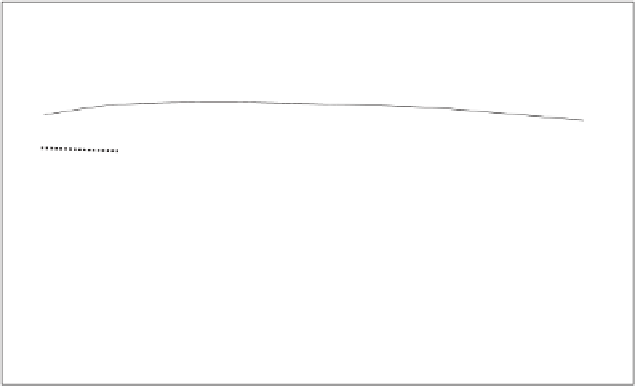Geoscience Reference
In-Depth Information
100
Pan-African (0.6 Ma)
Ontong
−
Java oceanic plateau (Cretaceous)
10
Superior Province,
Canada (2.7 Ga)
Birimian from West
Africa (2.1 Ga)
1
La
Ce
Nd
Sm
Eu
Gd
Dy
Er
Yb
Lu
Figure 11.18
Distribution of concentration of rare-earths in the basalts of the Superior Province (Canada), the
Birimian of West Africa, the Pan-African of the Near East, and the Cretaceous Ontong-Java ocean
plateau. This similarity suggests that continents formed from volcanic material similar to that
such deposits, they invariably overlie basaltic plateau material and so were formed subse-
quently. The subduction mechanism therefore builds up continental material from existing
oceanic plateau swept against and accreted to continents by plate tectonics. The normal
fate of the oceanic crust and of most plateaus is to be removed from the surface by sub-
duction, as it is clearly the case for the head of the Hawaiian plume under the Kamchatka
Peninsula. However, when the volume of the plume head is large enough to make the litho-
sphere buoyant, a new continent is formed. This construction is usually brief, taking less
than 100 million years.
From a strictly geochemical point of view, the composition of the crust is a compro-
mise between magmatic input from the mantle (basalt and andesite) and output through
erosion. For all practical purposes, interaction with seawater can be ignored because the
oceanic residence times of all elements are much shorter than the age of the continents.
composition of the material that erosion removes from the continent, as shown by the com-
position of rivers and their suspended loads, is very poor in silica, but rich in Mg and Ca. It
is incorrect to assume that the composition of continents simply is identical to that of their
protolith, i.e. the magmatic rock that may be their origin (
Fig. 11.19
)
. Continents must be
seen as dynamic systems with both inputs and outputs. As hardly any significant differ-
ences in composition are observed between past and present crust, particularly in detrital
sediments, it is considered that the system has reached a stationary state.
In fact, the assertion that present-day crust is indistinguishable from ancient crust applies
only to its elemental content, whether of major elements, like Si and Mg, or of trace
elements. When the isotopic compositions of Nd or Hf of basalts, either fresh or metamor-
phosed, at the time of formation are plotted, i.e. the composition of their source mantle,

































